by Michele Brown
Recently, “Ask a Librarian” received the following query:
“Hi, I have a question about the 1579 edition of Hill’s “profitable instruction of the perfite ordering of bees”, which is your “SF523 .H996 Phillips Beekeeping Collection”.
Over at Distributed Proofreaders we are trying to create a free e-book of this for Project Gutenberg.
We started with the scans from the Internet Archive / Biodiversity Heritage Library, which are of your copy. Your catalog entry says “56 [i.e.57] p. 19 cm.” My problem is that on the last page (the second 56) it has a catchword, and you can see the bleed through from the printing on the verso! So there have to be more pages. Plus, the table of contents says the second treatise has 8 (viij) chapters, and the last page is the end of chapter four.
If the whole of signature Kk was missing I could understand it, but the recto of at least the first leaf is there, so the verso has to be there too!
So I am asking for two things. Firstly, can someone look at the second page 56, signature Kk, and confirm that it continues on from there (I would assume for a full quarto signature).
Secondly, is there any way I can get images of the remaining pages, either by you rescanning it for the Biodiversity Heritage Library or by you sending me images directly?
I think you have the only copy of this that is complete (the British Library copy being shorter than yours) so I do not have a plan B here. Thanks in advance, Neil. “
Since this book is held in Mann Library Special Collections, the query went to Linda Stewart, Life Sciences Bibliographer and Special Collections Librarian. Linda then contacted the Conservation Lab.
Although the book in question was printed in 1579, it had a library-style binding typical of the 20th century. The verso of the last page had a blank leaf stuck to it that appeared to be covering up text. This blank leaf matched the paper throughout the book, not the endpapers of the new binding.
We tried to see the obscured text by placing a light sheet behind the laminated page, but this was unsuccessful.
Since we were unable to read what might be behind the pasted blank sheet, we decided to disbind the book and soak the last page in filtered water in order to separate the layers.
First we removed the commercial binding; then we cleaned the spine with a wheat starch paste poultice. This gave us an opportunity to see the steps involved in the previous binding process.
Under the paper linings, we discovered a cloth lining.
We could see that the new binding was put over the leather spine of an earlier binding. The book was oversewn before rebinding it.
The book had originally been sewn on three cords.
Once the spine was clean, we separated the book into sections.
Finally, we were ready to separate the last page from the blank page that was pasted to it.
The blank page came off easily and we discovered that the printing on the verso has nothing to do with the rest of the book. We can also see the instructions “Paste over this” written with what appears to be iron gall ink at the top of the page.
How did this happen?
Thomas Hyll died around 1576; his books were reprinted several times. Could there have been some confusion in the print shop when this book was re- printed in 1579? Perhaps an examination of all of his work would show us exactly which book the verso printing belongs to.
Meanwhile, what is the next chapter for this book? The sections will be repaired. It will then be resewn and rebound in binding more sympathetic to its time. It will also receive a new custom-made clamshell box and then it will be returned to the E.F. Phillips Beekeeping Collection where it will remain available for scholars for decades to come.
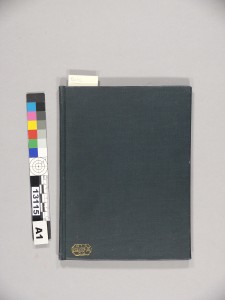
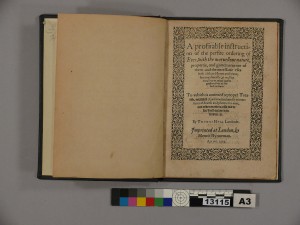
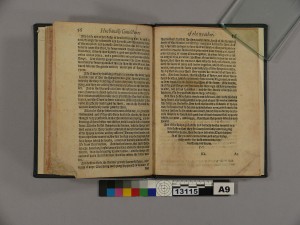
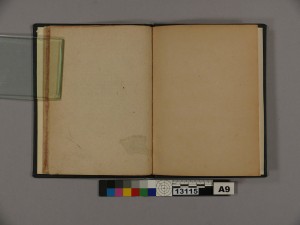
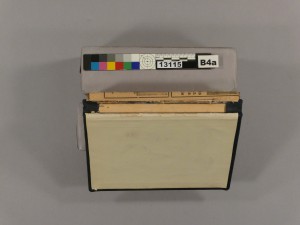
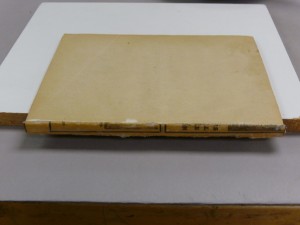
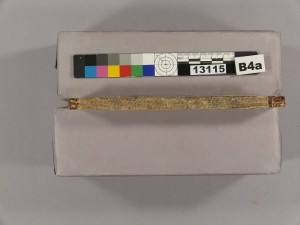
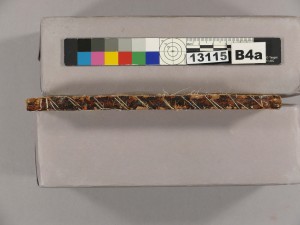
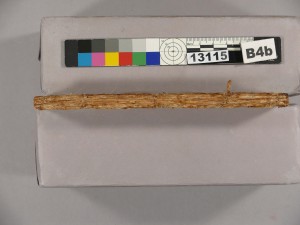
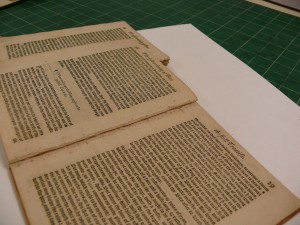
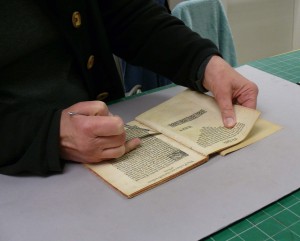
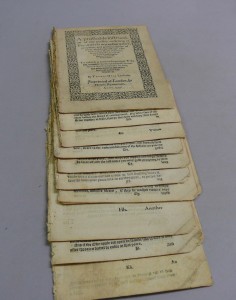
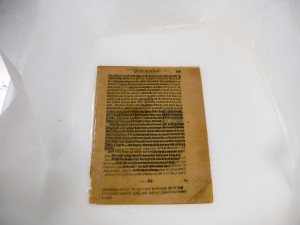
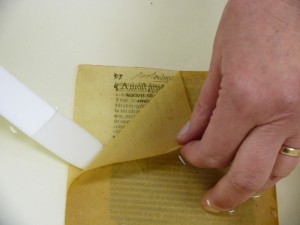
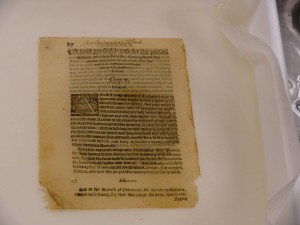
Great story that reminded me a lot of a treatment I did here. No mystery about missing pages with that one, but digging through the layers of treatments/bindings and rebinding similar. Looks like a wonderful book and fun project.
Thank you for sharing.
p.
Many thanks for your help with this. The finished e-book is now available to anyone for free from Project Gutenberg: http://www.gutenberg.org/ebooks/47765
Neil.